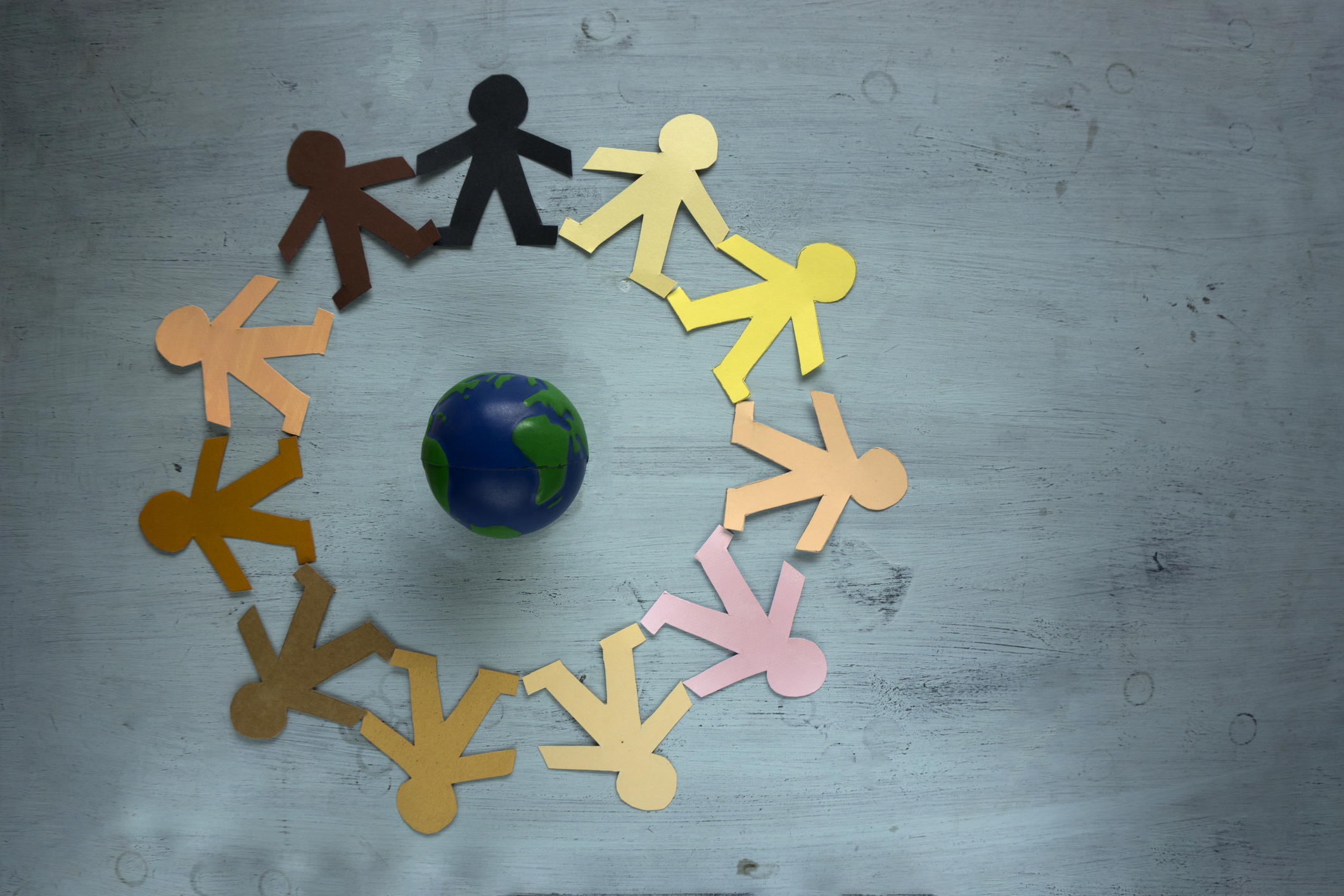Conflict, which is common in the workplace, can be destructive to a team and an organization. When managed well, conflict can be healthy.
Achieving (and embracing) healthy conflict small task however, as approximately 25% to 50% of an employee’s workday is consumed by interpersonal conflict, according to Janyne Peek-Emsick, Ph.D., founder of YourExecutiveCoach.com, who spoke at AEM's recently held Workforce Solutions Virtual Summit. Ultimately, that translates to an average of 2.8 hours per week that a typical employee spends dealing with conflict.
“What a waste of time and energy,” said Peek-Emsick. “If we could build our conflict competence, think about how that would impact our efficiency, productivity and sense of well-being as an organization. Conflict, a natural part of being human, is something that can be effectively managed. It is an opportunity for difference, better ideas, better practices. However, this is a challenge, particularly because of the relationships and the interpersonal aspect of conflict.”
For more support, ideas, or information related to conflict resolution, get started by visiting the AEM Workforce Solutions Toolkit. To access Janyne Peek-Emsick's full presentation, check it out on demand.
The Science of the Brain
Two essential parts of the brain are the prefrontal cortex and the amygdala, explained Peek-Emsick.
“The prefrontal cortex – the most vital part of the brain – is the slow brain, the rational thinking part of the brain where we do our executive functioning, our logic, our impersonal analysis, our decision-making," she continued. "The amygdala, the hijacked brain, the emotional brain, moves fast, like a knee jerk. It is an unconscious response to protect us from threat.”
Whether experiencing a physical threat or interpersonal conflict, a person’s brain and body responds the exact same way. The brain does not differentiate between physical threats and emotional and intellectual threats. Our hijacked brain tricks us into believing that the thoughts and feelings we are having are actually happening right now. This happens at the unconscious level, and we don't have control of it. These thoughts are automated versus intentional thoughts.
“When a thought or emotion fits one of our triggers – something in our memory that is either positive or negative, we experience that thought as if it is happening right now. When that thought triggers a threat, we usually find ourselves emotionally hijacked. The challenge is to remember that a thought is simply a thought,” said Peek-Emsick.
Brain Fuel
Emsick explained there are four chemicals that fuel happy brains:
- Dopamine – The sense of building a habit. Getting that short fix that we actually did something that we planned to do and that we have a sense of accomplishment.
- Oxytocin – The love hormone, is the fuel that makes us feel like we belong as part of a team and that we are cared about.
- Serotonin – A longer-term feeling of significance after accomplishing milestones and goals. It fuels our feeling of status, of being valued, of being valuable
- Endorphin – Masks pain so that we can push through painful experiences.
However, feelings of vengeance, wanting to get back at someone and harboring negative feelings can trigger the same brain fuel as feelings of gratitude and forgiveness.
“But we can physically wire our brain by harboring unforgiveness rather than getting the positive doses of brain fuel that come from the accomplishment of working through the hard stuff," said Peek-Emsick. “One of the things that happens when we continue to fuel ourselves with resentment, unforgiveness and unaddressed conflicts is that we fuel cortisol – the evil brain fuel.”
She noted that cortisol affects all sorts of physiological functions. It weakens the immune system; is associated with heart disease, high blood pressure, high blood sugar and diabetes; and fuels anxiety, depression and headaches. Cortisol is present when a person has persistent, unaddressed conflict and that keeps them from being able to engage their executive functioning.
“When we are pursuing rewards and good things, dopamine oxytocin, serotonin and endorphins fuel our brain,” she continued. “When we are feeling threatened, cortisol – the negative fuel – is present. The more that we are able to focus on positive thoughts, feelings and actions and building habits, we fuel the reward system of dopamine, oxytocin, serotonin and endorphin. The more we put ourselves in situations, or we remain in situations that feel like a threat and are in conflict and tense, we are fueling cortisol and that has a significant impact on our physical and intellectual well-being.”
Maslow's Hierarchy of Needs
To navigate and negotiate conflict, one has to understand why conflict is happening, said Peek-Emsick. Maslow's Hierarchy of Needs can help.
At the base of the hierarchy is physiological needs – pursuing the biological requirements for human survival: air, food, drink, sleep, etc., she explained. The next level is safety and security. Next is belonging, staying liked and being a member of a group. Then is self-esteem, feeling worthy, feeling respected, adding value and contributing. The highest level is self-actualization, the sense of feeling meaning and purpose in what one is doing.
Where does team and productivity fit into this hierarchy? Team fits in the belonging level and productivity fits in the self-esteem level.
“One of the things that happens when we are in the midst of change, when we are experiencing conflict and feeling threatened, is that instead of focusing on the very things that make us successful and productive and feeling a part of the team, we focus on keeping food on the table and a roof over our heads," said Peek-Emsick. "When we feel threatened, we can hoard information and do the exact thing that threatens our sense of continued success, our self-esteem and our belonging.”
“If we could build our conflict competence, think about how that would impact our efficiency, productivity and sense of well-being as an organization. Conflict, a natural part of being human, is something that can be effectively managed. It is an opportunity for difference, better ideas, better practices." -- YourExecutiveCoach.com founder Janyne Peek-Emsick
Fundamental Attribution Error
One other element as to how the brain works is the fundamental attribution error.
“This occurs when a person is caught in the trap of conflict," said Peek-Emsick. "When we are in conflict, we tend to attribute it to the other person's character flaws. For ourselves, we tend to attribute it to the situation.”
At the most fundamental level, the brain is geared toward trying to run away from threat – the fight-flight or freeze response – or moving towards reward, she observed. Maslow's SCARF model can help explain human behavior as driven by social concerns.
The acronym SCARF stands for:
- Status – A sense of value and significance in the context one is in
- Consistency – A sense that if a person does certain things well, they can expect a certain kind of outcome
- Autonomy – Wanting to be a part of the decisions that affects one’s life and work
- Relatedness – People want people to care about them and they want to care about people
- Fairness – Being treated fairly and transparency
The SCARF model works to move people away from threat and toward rewards by their sense of Status, Consistency, Autonomy, Relatedness and Fairness. It works with colleagues and at every level of an organization.
She offered this advice on how to use the model:
- Status – Define the steps a person can take to have a consistent, better future and reinforce and clarify an individual's status when they are feeling threatened.
- Consistency – When in the midst of change or figuring out how to move forward, be clear about the incremental steps to be taken and celebrate any progress that is being made.
- Autonomy – Allow others to participate in decisions that affect them and provide choices.
- Relatedness – Focus on communicating team success.
- Fairness – Transparency is important because people want to understand what is happening and feel like they are in on things.
Practical Tools to Manage Conflict
Peek-Emsick said one of the most powerful and practical tools for negotiating through conflict is understanding how people are motivated by applying Maslow's Hierarchy and understanding Maslow's SCARF. Another tool is having catalytic conversations – helping people negotiate through the differences that they experience on a day-to-day basis at their job.
By way of illustration, she said Susie and Frank, who are on different teams, must work together on a regular basis. Something happens and they are having conflict. Instead of trying to work things out, Susie asks her boss to talk to Frank’s boss to fix things.
“This model is very frequent in organizations,” noted Peek-Emsick. “I call it going to your in-laws for marital counseling. It does not work there and it does not work in the office.”
She advised telling Susie to have a conversation with Frank to talk through their issues because only the two of them can make things better.
Peek-Emsick said she frequently hears that a person is not equipped to have such a conversation or is unwilling to have the conversation. “In this case, as a leader, you need to help that person become more conflict competent,” she instructed. “Facilitate the conversation so that both people can learn how to have these types of conversations and work through their conflict.”
Team Alignment Hierarchy
Another tool to understand where conflict is happening and what can be done about it is to create alignment within the team, added Peek-Emsick. This can be accomplished by employing the Team Alignment Hierarchy.
There are six levels to this hierarchy:
- Environment – How do we fit into the overall organization and its needs?
- Goals – What are our shared goals?
- Roles – What are our roles?
- Processes – How do we work together and work through problems?
- Relationships – How do we make use of each other’s skills, perspectives and insights?
- Individuals – What do team members need from the teams?
Where Does Conflict Start to Appear?
Conflict generally starts to appear at the relationships level. Conflict at this relationship level is actually a symptom of a misalignment at least two levels higher on the Team Alignment Hierarchy, either a misalignment of goal clarity or of role clarity.
“Whenever you are experiencing conflict in your team and misalignment, what is most important is to not to focus on relationships but to start at the top of the hierarchy. Understand the environment you are in. What are your shared goals? What are your roles? How are we going to do this together? How are we going to communicate? How are we going to handle differences along the way?” Peek-Emsick stated.
There may not be a need to get to the relationships level because “it is essential to first to create goal alignment. This is where people, who do not necessarily have to like each other, can work together well because of their shared goals and clarified goals.”
Conflict Competence
“We do not have to be afraid of conflict,” Emsick said in wrapping up her The Neuroscience of Conflict session. We can understand what is happening in the brain. We can fuel a direction to reward in those DOSE chemicals that help us feel satisfied and happy. Those chemicals also help us when we are caught with cortisol and lose our ability to innovate. When we are outside of our executive functioning we are not able to creative.”
She advocated “building conflict competence as individuals, as leaders and in your teams to help others live much richer lives and be more successful as employees and team members in your organization.”
Learn More
For more support, ideas or information, get started by visiting the Workforce Solutions Toolkit or contact AEM Senior Director of Workforce Development Julie Davis at jdavis@aem.org.
For more on topics important to equipment manufacturers, subscribe to the AEM Industry Advisor.





